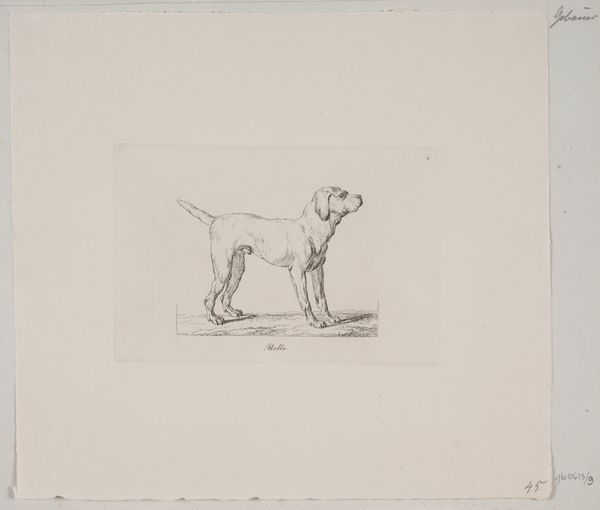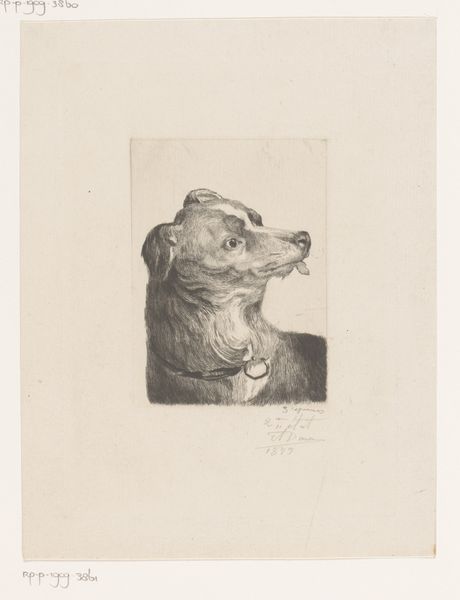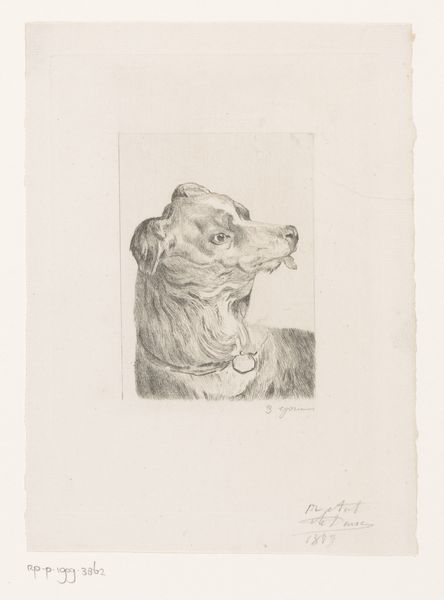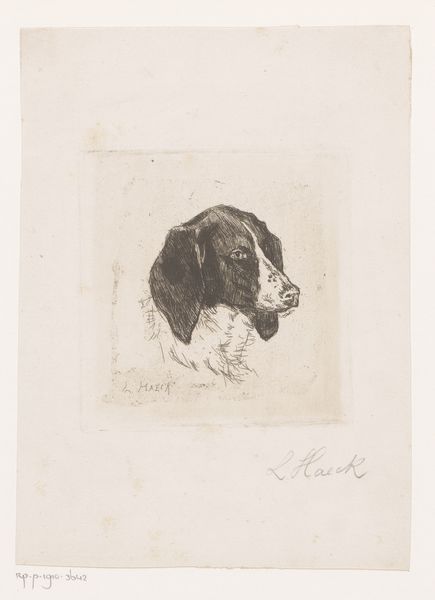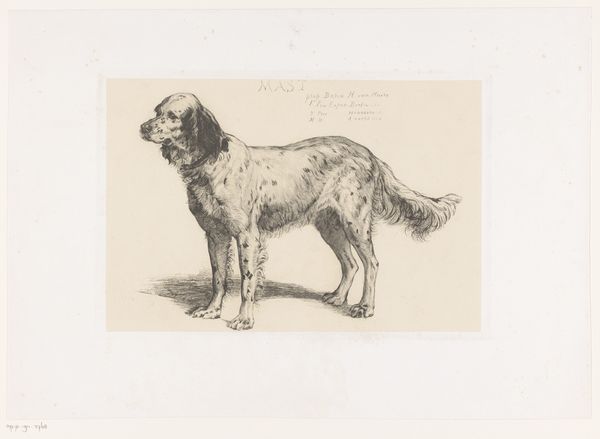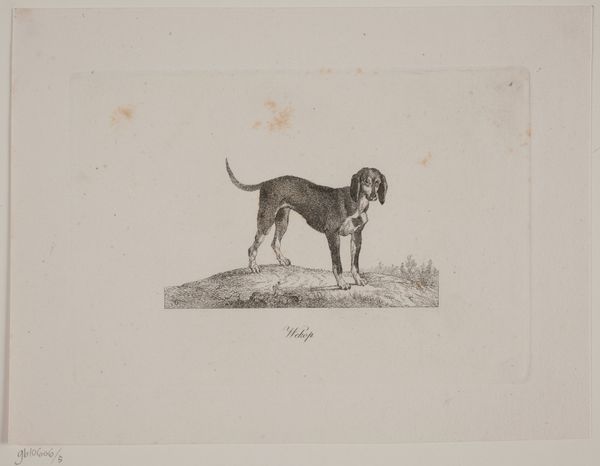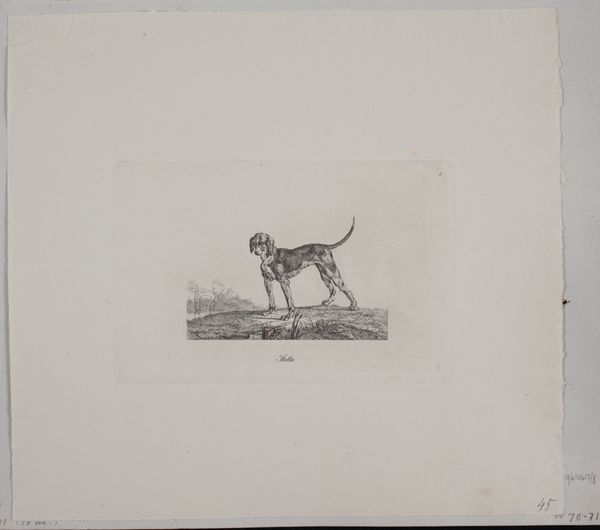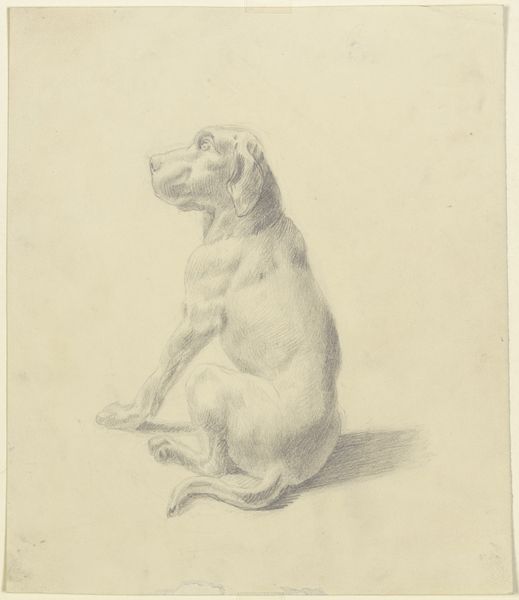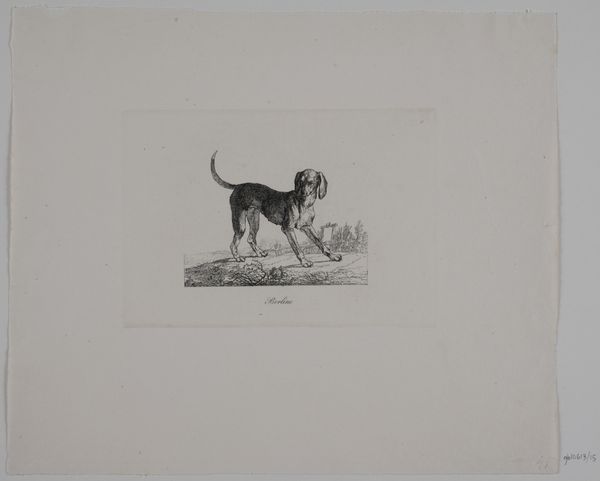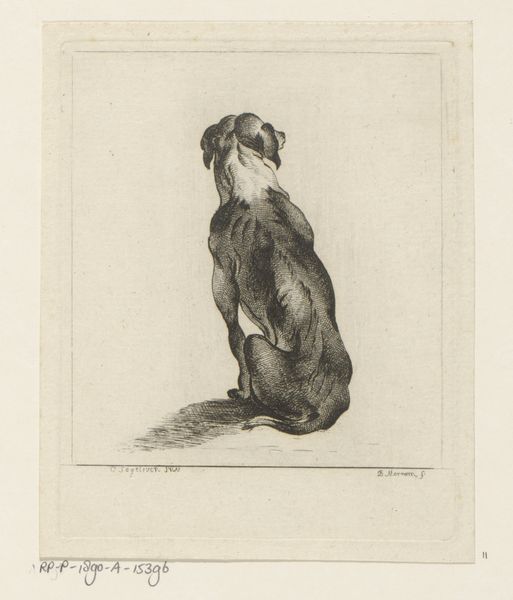
drawing, print, engraving
#
portrait
#
drawing
#
animal
# print
#
engraving
Dimensions: 100 mm (height) x 131 mm (width) (plademaal)
Curator: Here we have "En hund," or "A Dog," an engraving by Theodor Kiellerup, created sometime between 1818 and 1850. It's currently held at the SMK, the National Gallery of Denmark. What are your first impressions? Editor: Stark! The dog, rendered with meticulous detail, dominates the scene, and I am intrigued by its quiet, almost melancholy, presence. What breed would you say that is? And how do you feel about that specific technique used for this piece? Curator: It appears to be some sort of bulldog. I'd say the fine lines of the engraving allow for a remarkable precision, don't you think? The texture of the dog's fur is captured quite skillfully. But it also suggests something about the rising popularity of dog breeding and domestication as markers of class during that period. What do you think of that idea, given your focus on materials and making? Editor: I'm wondering what specific kind of metal plate he would have been working with for an engraving of this size. What were the typical techniques for pulling the printing at the time? More fundamentally, how accessible was this medium to someone like Kiellerup? I bet it wasn't cheap. So how did that limit artistic creation and distribution? Curator: It would have been a copper plate most likely, and you are correct, this technique was relatively expensive at the time and indicated access to specific resources. That raises interesting questions about the economics of art production and distribution in 19th-century Denmark, and what that meant to the average patron. Editor: Absolutely. This isn't some fleeting sketch; it is clearly an intentional object of aesthetic merit. Look at the landscape behind him! Is that supposed to reference fields of harvest, and this dog its gatekeeper? Who was it produced for, and why? And I'd like to explore how the means of reproducing this image allowed for a certain level of control of how others engage with nature and animal labor. Curator: An important question, indeed. The piece may reflect on the status of animal labor, and the role animals play in society. How does that understanding change when it is translated into images like this one, particularly aimed towards more elite circles? Editor: The materiality speaks volumes—from the cost of creation to its purpose. Curator: A remarkable interplay of technique, class, and the human-animal relationship rendered in ink. Editor: Material processes reveal the story beyond the image itself.
Comments
No comments
Be the first to comment and join the conversation on the ultimate creative platform.


